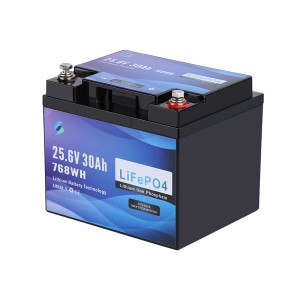
Step 1: Identify the Battery Type
Most powered wheelchairs use:
-
Sealed Lead-Acid (SLA): AGM or Gel
-
Lithium-ion (Li-ion)
Look at the battery label or manual to confirm.
Step 2: Use the Correct Charger
Use the original charger provided with the wheelchair. Using the wrong charger can damage the battery or pose a fire risk.
-
SLA batteries need a smart charger with float mode.
-
Lithium batteries require a Li-ion-compatible charger with BMS support.
Step 3: Check If the Battery Is Truly Dead
Use a multimeter to test voltage:
-
SLA: Below 10V on a 12V battery is considered deeply discharged.
-
Li-ion: Below 2.5–3.0V per cell is dangerously low.
If it's too low, the charger may not detect the battery.
Step 4: If the Charger Doesn’t Start Charging
Try these:
Option A: Jump Start with Another Battery (for SLA only)
-
Connect a good battery of the same voltage in parallel with the dead one.
-
Connect the charger and let it start.
-
After a few minutes, remove the good battery, and continue charging the dead one.
Option B: Use a Manual Power Supply
Advanced users can use a bench power supply to slowly bring voltage back up, but this can be risky and should be done cautiously.
Option C: Replace the Battery
If it's old, sulfated (for SLA), or the BMS (for Li-ion) has shut it down permanently, replacement may be the safest option.
Step 5: Monitor the Charging
-
For SLA: Charge fully (can take 8–14 hours).
-
For Li-ion: Should auto-stop when full (usually in 4–8 hours).
-
Monitor temperature and stop charging if battery gets hot or swells.
Warning Signs to Replace the Battery
-
Battery won’t hold charge
-
Swelling, leaking, or heating
-
Voltage drops too fast after charging
-
Over 2–3 years old (for SLA)
Post time: Jul-15-2025















